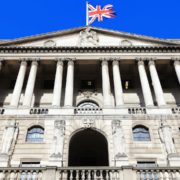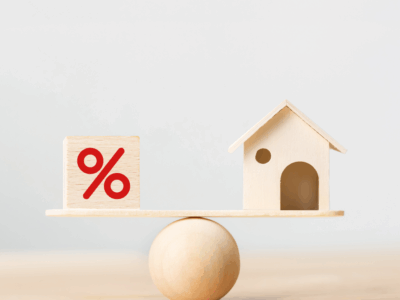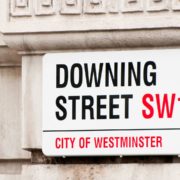In the most recent Halifax Price Index (see here) for April, UK house prices demonstrated stability, with a marginal monthly increase of +0.1% and an annual growth rate of +1.1%, reflecting a plateauing trend in early 2024. This resilience is attributed to a period of relative stability amid higher interest rates, fostering confidence among homebuyers. Despite affordability challenges, evidenced by rising mortgage rates, increased activity and demand are observed, with greater numbers of mortgage applications and approvals.
Notably, first-time buyers are adjusting their preferences, targeting smaller properties to compensate for higher borrowing costs. This shift is reflected in property price dynamics, with the value of flats experiencing the most significant growth, narrowing the ‘growth gap’ relative to larger properties. Affordability constraints persist, yet expectations of future Bank of England base rate changes offer potential for improved affordability through expected decreases in fixed mortgage rates.
Regionally, Northern Ireland leads in annual property price growth, while annual declines are prevalent in southern England. The North-South divide persists, with the Northwest of England experiencing the strongest growth, while London’s prices remain relatively flat. Overall, while volatility may persist, the housing market shows signs of resilience and modest growth prospects for 2024.
Kate Steere, property expert at personal finance comparison site finder.com gives her thoughts:
“A lot of uncertainty still surrounds the UK housing market, but today’s figures, alongside the fact that mortgage approvals have been on the rise, shows that buyer demand could be strengthening.
The Bank of England is widely predicted to cut rates in the coming months, with half of experts believing rates will be cut at the Bank’s meeting on 20 June. As a result, buyers who have so far held off, are beginning to return to the market. However, affordability issues remain, with several big lenders increasing their rates over the last week. Therefore, it’s unlikely that we’ll see UK house prices sprint away in 2024, but there are encouraging signs of recovery. “
Daniel Austin, CEO and co-founder at ASK Partners, said: “The property sector is in recovery mode. Rent values have seen sustained growth, positioning real estate as reasonably valued in comparison to gilts and presenting growth potential. In the realm of commercial real estate, factors like physical condition, location, and age significantly influence a property’s value. Well-maintained properties boasting modern amenities tend to command higher prices, while neglected ones may struggle to attract tenants or investors. In the current market, the emphasis has shifted towards the importance of location and quality over the yield on debt or cost. We anticipate opportunistic acquisitions of prime properties in prime locations.
“A RICS survey uncovered that non-traditional market segments, such as aged care facilities, student housing, data centres and life sciences real estate are yielding the most robust returns. With housing set to be a battleground point in this year’s election and as the sector moves to the top of the agenda for all parties, we hope to see a long-term plan for new homes, including social housing, however, we expect we will see more short-term fixes. Stimulus will be welcome but can create unnecessary froth. For voters, a stamp duty holiday or reprieve may be a welcome sign. For developers, eased planning regulations for brownfield sites and conversions will be popular. However, the government will be faced with a challenge – striking a balance between trying to increase housing supply and therefore affordability by supporting developers and private landlords but appealing to voters who do not want to see greenfield development. The planning system remains hotly political and as a result, landlords and developers are unlikely to see much in their favour. As a debt provider, we hope to support the best sites in prime locations with well-capitalised sponsors who understand their product. Following this strategy, we aim to bolster developers’ initiatives with the flexible underwriting approach that is necessary for navigating current planning rules and market uncertainty. This will enable us to continue to offer opportunities for the growing number of private individuals opting to invest in property debt.”
Jeremy Leaf, north London estate agent and a former RICS residential chairman, says: “We are not surprised to see house prices up a bit, then down a bit – a pattern which we are finding is repeated on the ground, reflecting that some sellers are more realistic than others.
“The market has lost a little momentum in the last month or so which has chimed with recent modest increases in mortgage rates as well as listings. However, underlying confidence remains fairly strong for now at least, allowing purchasers the opportunity to perhaps negotiate a little harder where possible.”
Gareth Lewis, managing director of property lender MT Finance, says: “The housing market desperately needs some stimulus, giving buyers and sellers more confidence to transact. The slight uptick in prices compared with March suggests there is a level of confidence in the market but it only goes so far with not enough properties coming to market or buyers able and willing to transact.
“The housing market is a work in progress. Prices haven’t fallen off a cliff, which is encouraging, but some form of stamp duty stimulus would really boost activity and transaction numbers, which are far more important than prices.”



























Comments